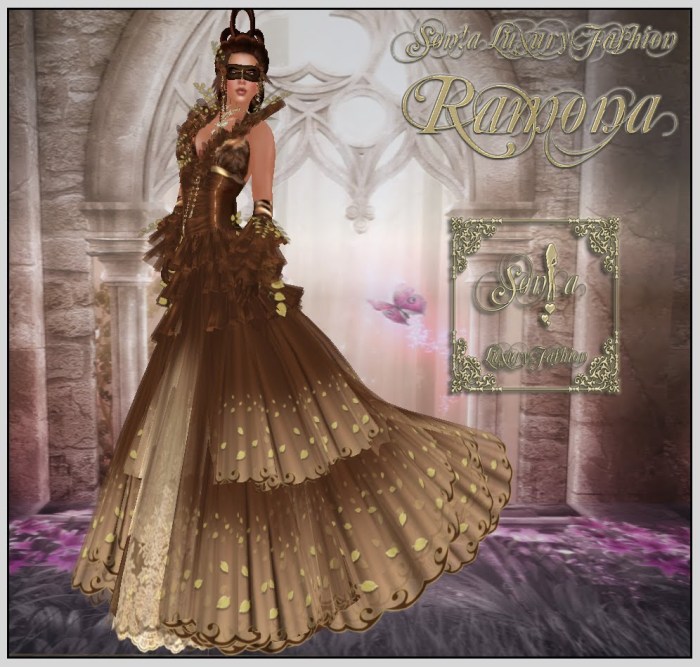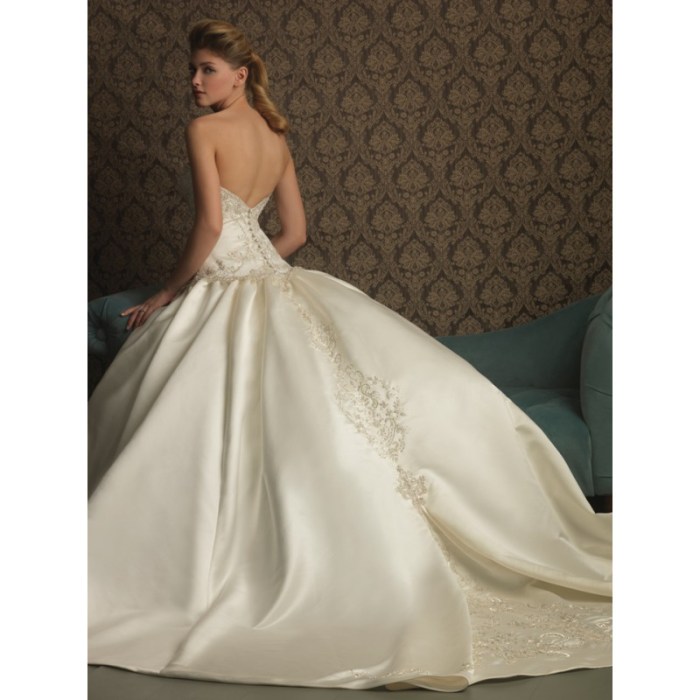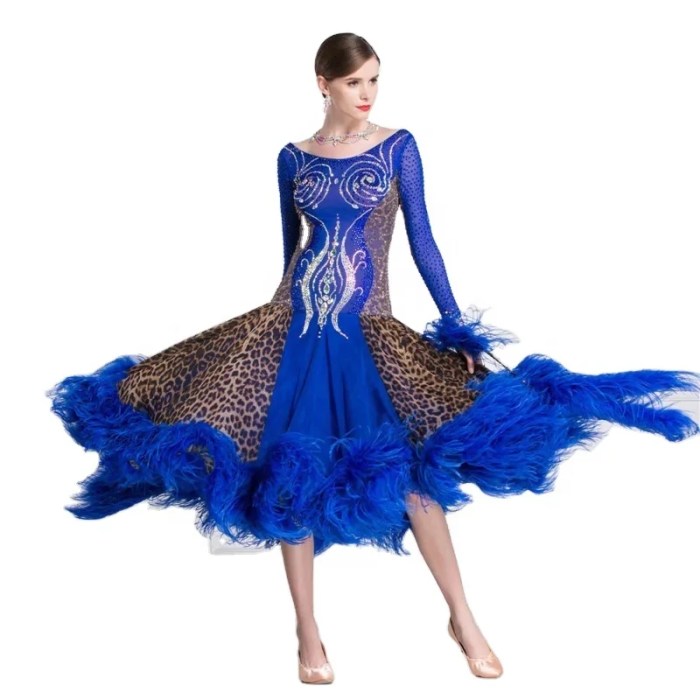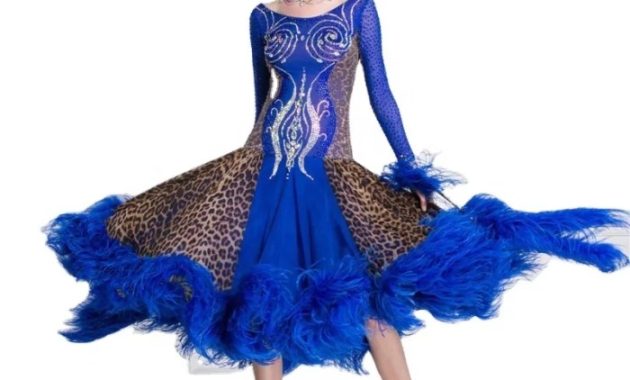Ballroom Style Wedding Dresses: A Timeless Elegance
Ballroom style wedding dresses – Ballroom wedding dresses epitomize classic elegance and romantic grandeur. These gowns, often characterized by their full skirts and structured bodices, evoke a sense of timeless sophistication. This article delves into the defining characteristics, historical evolution, design elements, modern interpretations, styling considerations, and the process of choosing the perfect ballroom gown for your special day.
Defining Ballroom Style Wedding Dresses

Source: googleusercontent.com
Ballroom style wedding dresses are distinguished by their dramatic silhouettes, luxurious fabrics, and intricate detailing. They typically feature a fitted bodice that accentuates the waist, complemented by a full, flowing skirt that creates a majestic look. This style often incorporates elements of classic Hollywood glamour and vintage romance.
Common fabrics include silk taffeta, satin, organza, and lace. These materials contribute to the luxurious feel and drape of the gown. Silhouettes commonly include A-line, ballgown, and princess styles, often with sweetheart, V-neck, or off-the-shoulder necklines. Compared to A-line dresses which offer a more streamlined silhouette, and mermaid dresses that hug the body before flaring at the knees, ballroom gowns prioritize volume and a more dramatic, princess-like aesthetic.
Historical Context and Evolution
The evolution of the ballroom wedding dress is intrinsically linked to changing social norms and fashion trends. Early iterations were simpler, reflecting the styles of the era. The rise of Hollywood in the mid-20th century significantly impacted the style, with iconic actresses influencing the design and popularity of glamorous ballroom gowns. Designers like Vera Wang and Oscar de la Renta have played crucial roles in shaping contemporary interpretations of the style.
A timeline could illustrate this evolution: The 1920s saw simpler, drop-waist styles; the 1950s brought full skirts and cinched waists; the 1980s featured large, voluminous designs; and contemporary designs often incorporate modern elements while retaining the classic ballroom silhouette.
Design Elements and Details
Ballroom gowns are often adorned with intricate embellishments that enhance their luxurious appearance. These details contribute to the overall formality and elegance of the dress.
| Element | Description | Formality Level | Example |
|---|---|---|---|
| Beading | Intricate patterns of beads sewn onto the fabric. | High | Swarovski crystal beading on a satin bodice. |
| Lace | Delicate or ornate lace appliqués or panels. | Medium to High | Chantilly lace overlay on a tulle skirt. |
| Embroidery | Detailed stitching creating patterns or designs. | Medium to High | Floral embroidery on a silk organza bodice. |
| Sleeves | Various styles, from sleeveless to long sleeves, impacting formality. | Variable | Long sleeves with lace detailing, or off-the-shoulder sleeves. |
| Train | Length varies, influencing formality. | Variable | Cathedral-length train, chapel-length train, or no train. |
Modern Interpretations and Trends, Ballroom style wedding dresses
Modern ballroom gowns often retain the classic silhouette but incorporate contemporary design elements. Designers are experimenting with new fabrics, embellishments, and silhouettes, creating unique and stylish interpretations of the traditional ballroom dress. For example, a modern design might feature a clean, structured bodice made from silk crepe, paired with a full skirt of tulle with subtle embroidery, and a minimalist, bateau neckline.
A modern ballroom wedding dress could feature a sleek Mikado silk bodice with subtle draping, a flowing tulle skirt with delicate lace appliqués, and long, elegant sleeves. The overall silhouette would be a modified A-line, balancing the traditional ballroom elegance with a contemporary, less voluminous feel.
Styling and Accessories

Source: sandiegotowingca.com
Accessorizing a ballroom gown requires careful consideration to complement its elegance. The accessories should enhance the overall look without overpowering the dress.
A styled look could feature a ballroom gown with a sweetheart neckline and a chapel-length train, paired with a classic updo, delicate diamond earrings, and a simple, elegant veil. The makeup would be natural and radiant, enhancing the bride’s features without being overly dramatic. The overall aesthetic would be sophisticated, romantic, and timeless.
Choosing the Right Ballroom Gown

Source: alicdn.com
Selecting the perfect ballroom gown involves considering several factors, including body type, venue, and personal style. The level of formality should be appropriate for the wedding’s overall theme and setting.
A flowchart could guide the decision-making process: Start with defining the wedding’s formality; consider body type and preferred silhouette; choose fabrics and embellishments; finalize the neckline and sleeve style; and lastly, select the train length.
Ballroom style wedding dresses often evoke a sense of timeless elegance, their full skirts and structured bodices creating a dramatic silhouette. For brides seeking a similar look during colder months, consider the luxurious options available in winter wedding dresses for plus size , which often incorporate rich fabrics and long sleeves. Ultimately, whether it’s a summer or winter wedding, the right ballroom gown will always make a statement.
Illustrative Examples
A ballroom gown with a fitted bodice and a full skirt in ivory silk taffeta, adorned with delicate pearl beading, creates a classic, elegant look. The full skirt provides a dramatic silhouette, while the beading adds a touch of sparkle and sophistication.
A ballroom dress with a sweetheart neckline and a cathedral-length train in flowing silk organza, accented with lace appliqués, exudes romance and grandeur. The long train adds drama and formality to the overall look.
A modern minimalist ballroom gown might feature a structured crepe bodice with a simple A-line skirt, and subtle, geometric embroidery. This design offers a contemporary twist on the classic style, showcasing clean lines and understated elegance.
Common Queries: Ballroom Style Wedding Dresses
How much do ballroom style wedding dresses typically cost?
The price range varies significantly depending on designer, fabric, embellishments, and customization. Expect to find options ranging from several thousand dollars to tens of thousands.
Can I wear a ballroom style wedding dress if I’m not having a formal wedding?
Yes, the level of formality can be adjusted. A simpler fabric, less embellishment, or a shorter train can make a ballroom-style dress appropriate for a less formal setting.
Where can I find ballroom style wedding dresses?
Many bridal boutiques carry ballroom-style gowns, as do online retailers specializing in wedding attire. Consider visiting both to find the best selection and fit.
Are ballroom style wedding dresses comfortable to wear all day?
Comfort depends on the fabric and construction. Look for breathable fabrics and ensure a proper fit to maximize comfort throughout the day. Consider alterations for the best possible fit.

